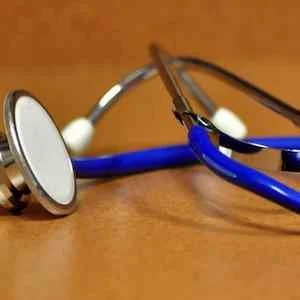Despite advancement in the stethoscope itself such as the ability to send sounds directly to an EMR or using algorithms to analyse these transmissions for a better diagnosis, the fact is that stethoscopes have been allowed to become archaic by the healthcare community itself. A study published in Prehospital Emergency Care suggests that one in three stethoscopes in the US used by emergency medical service providers is contaminated with methicillin-resistant Staphylococcus aureus (MRSA) bacteria. This study conducted by the University of Medicine and Dentistry of New Jersey reveals that of the 50 stethoscopes evaluated in the study, 16 had MRSA colonisation and around the same number of EMS providers had no idea the last time their stethoscope was cleaned. So what does that say about the importance attached to this tool? Even the people using it do not seem to care enough to maintain it.
See Also: New Algorithm Provides More Effective ECG Diagnosis
Jagat Narula, a cardiology and associate dean for global health at the Icahn School of Medicine at Mount Sinai Hospital in New York thinks that the stethoscope is indeed dead and that its time is now over. But W. Reid Thompson, Associate Professor of Pediatrics at Johns Hopkins School of Medicine does not agree. “We are not at the place, and probably won’t be for a very long time, where listening to the body’s sounds is replaced by imaging. It is valuable,” he said.
There is no doubt that with so much technological advancements and with the availability of echocardiograms and pocket-size ultrasound devices, there really seems no need for doctors to go around slinging stethoscopes. But then, there is also the argument that doctors really never appreciated this tool and haven't been good at using it at all.
The stethoscope is the last tool that healthcare providers use to determine the nature of a problem. Sadly, the stethoscope appears to be more of an icon and a symbol rather than a tool effectively used by doctors. You might see it used a great deal by actors in soap operas and TV doctor shows (Hugh Laurie anyone?) but in reality, it is nothing but a tool to create a bond between the doctor and the patient. Much needed today especially because everything has become so mechanical and the time spent for physical examinations has reduced significantly. Doctors spend more time updating electronic medical records than being one-on-one with their patients. As John M. Criley, professor emeritus of medicine and radiological sciences at the David Geffen School of Medicine at UCLA so aptly puts it, “It’s all chart rounds and computer readout rounds. It’s horrible. I cringe."
A study published in the journal Global Heart also pretty much says the same thing. The authors point out that the stethoscope may be the most iconic symbol in medicine but is no longer enough in many emergency cases. There is considerable doubt about the accuracy of a physical examination and many studies have now shown that the stethoscope may not be as accurate as it was once perceived to be. This century has seen the introduction of much more advanced diagnostic tools and ultrasound imaging. These tools are more effective, more portable and more accurate. They can easily replace the stethoscope and offer doctors the ability to improve both detection, diagnosis and treatment of cardiac disease. Another study conducted by Lederle et al. shows that point-of-care ultrasound is much more accurate in detecting abdominal cardiac aneurysms as compared to the traditional physical examination. Once believed to be only used by obstetricians/gynaecologists, the ultrasound is today considered indispensable within the emergency department.
A study published in JACC Cardiovascular Imaging in 2014 suggests that hand-held instruments are better than physical examination. The findings showed that hand-held ultrasound (HHU) correctly identified 82 percent of patients as compared to 47 percent with a physical examination. HHU was also found superior to physical examination for both normal and abnormal cardiac function and superior to physical examination in correctly identifying the presence of substantial valve disease. The study thus concludes that as far as cardiologists are concerned, HHU provides a much more accurate diagnosis than a physical examination.
So what lies ahead for the good-old stethoscope? Only time will tell. It is still a handy tool to create a link between the patient and physician. Let's see what the future brings for French physician Rene Laennec's invention - still in use from 1816 to 2016.








